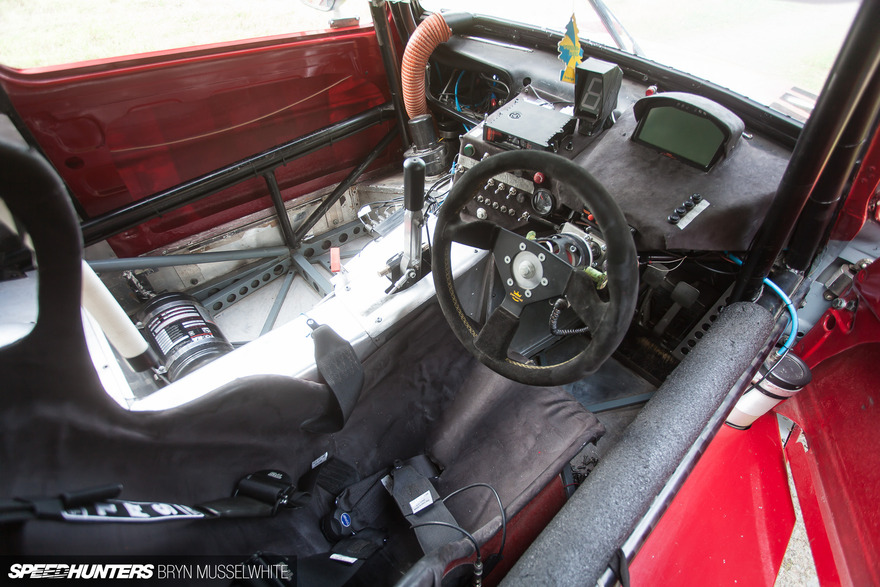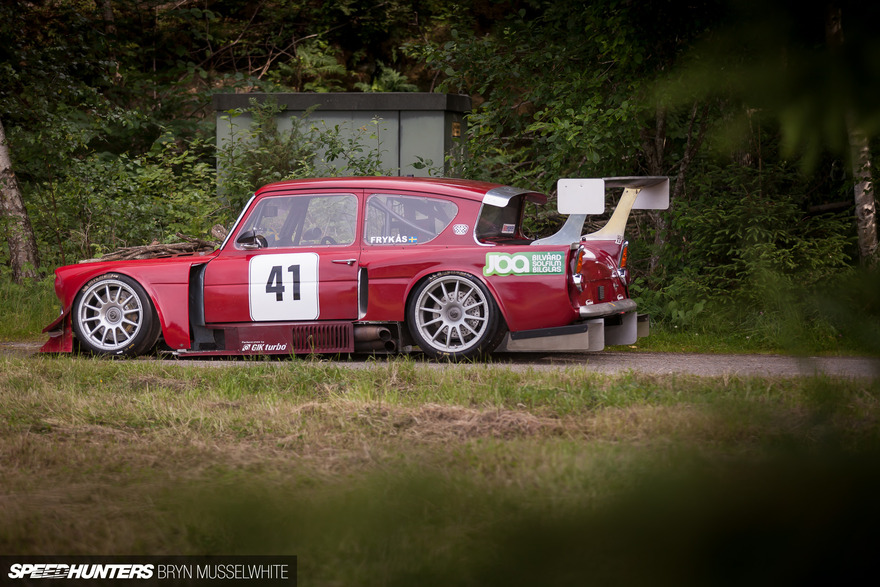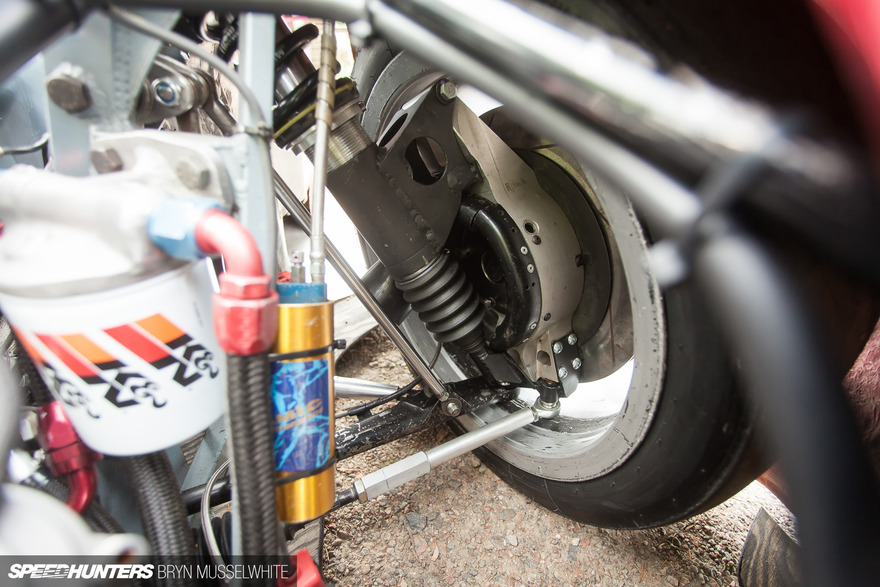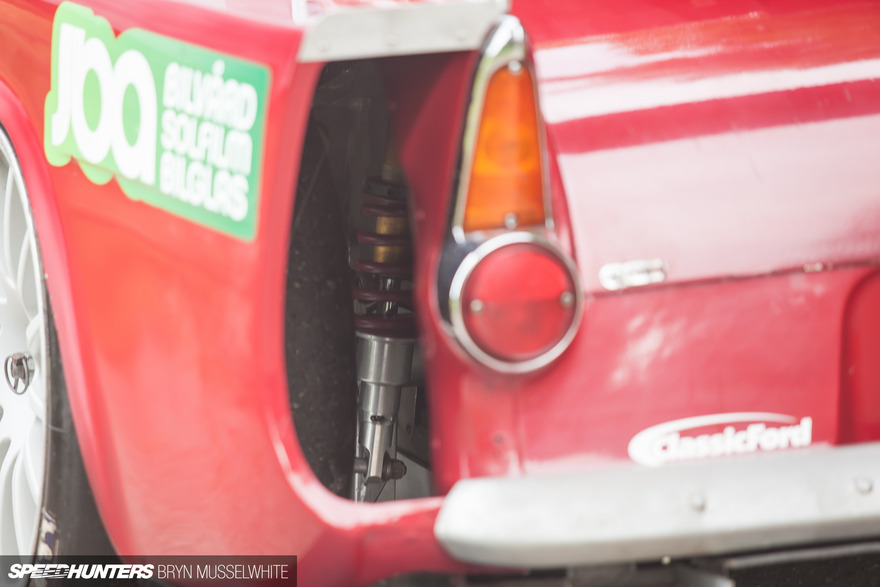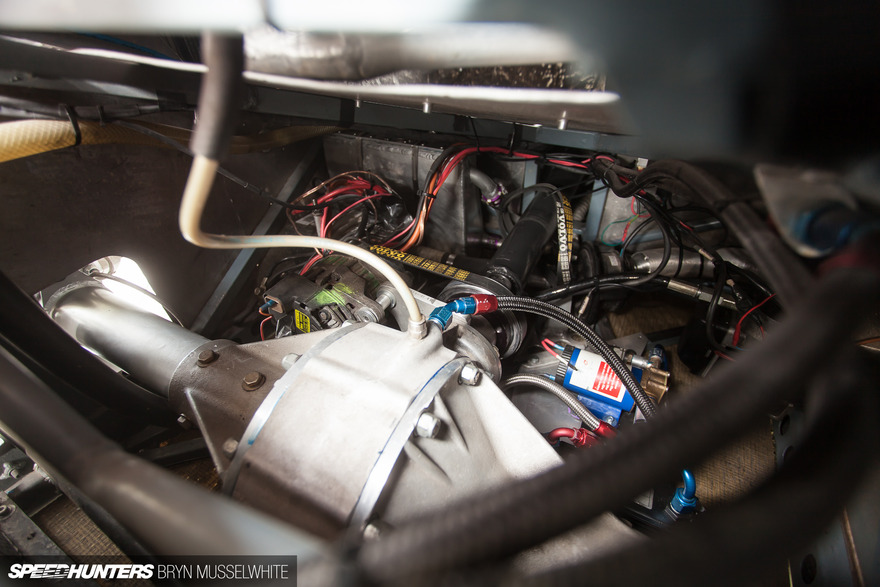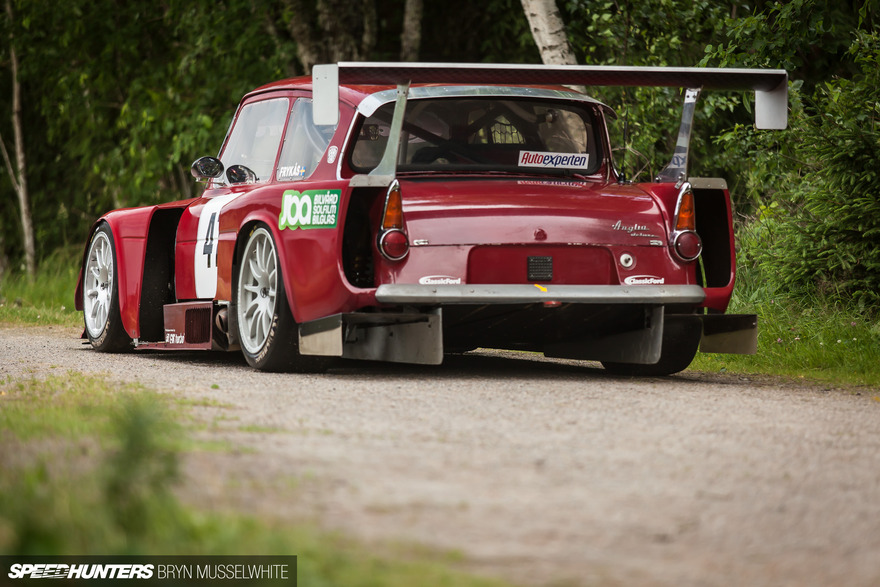Ford Anglia is a budget model of British «Ford» division with a simple interior, engine and mediocre dynamics. It is a family car, the Ford Escort predecessor, the grandfather of the current Ford Focus. The latest generation of Anglia is very popular in the UK and in the world because of its unusual design and the its role in the movie «Harry Potter and the Chamber of Secrets.»
The distinguishing feature of this model — the negative slope of the rear window, copied from overseas models of Ford, Mercury and Lincoln. This solution had practical sense — the passenger compartment increased a bit and the glass remained relatively clean in bad weather. Standard 1.0 liter engine accelerated Anglia to 118 km\h, and the 0–100 km\h acceleration took 27 seconds. But that did not stop fans of motorsports — Russian Moskvitch and Volga were not then faster but sports versions could be faster than stock ones.
The current car has come to us from 1964. Then was produced this right-hand drive car, which become today a brain-blowing prototype. In the mid-sixties engineer Leif Frykas got his driving license and his parents gave him this car for everyday trips. After several years in 1973 Leif decided to try himself in racing. Anglia, as a light, RWD car became a quite good basis. After a couple of years of hard work the car appeared on the track. Of course, after many decades the car survived lots of changes, but there still remain few old school details in the current version of the car. For example, right hand drive — until 1967 in Sweden the traffic was left-handed but in September 1967 the rules were changed, and the owner decided not to change the steering wheel position and continued to drive a car without modification.
In 1986, the space frame was put under the body and by 1989 it got the look which, with minor changes, can be seen the present day. Leif, who was then working for Volvo and helped the company to build the A-group motors used the know-how for himself as well and under the hood of the Ford you can find a Swedish motor. There were successes and failures, but the car continued to delight its owner on the tracks, and in 2009 Leif’s son — Kjell continued the project. For many years he was surrounded by his dad’s passion and engineering so the son grew up as a talented engineer as welland was able to develop new solutions for old Anglia.
Today, from the original body remained only a roof, roof racks, lights and grille. The rest is either done with their own hands, or is a fantastic hodgepodge, for example the steering rack is taken from Alfa Romeo, electrical steering from the Porsche 997 Carrera Cup, suspension arms are both — homemade and from TOCA cars — BTCC support racing series, dampers from JTCC BMW E36.
Motor under the hood — Volvo B230 block, increased to 2.5 liters of volume and with a compressor. Pistons and crankshaft are Volvo too... from the motorboats Volvo Penta division.
Transmission — six-speed Tractive sequential gearbox, rear differential Winters Performance, by the way, here is applied an interesting solution — the alternator is located next to the differential and is driven by the propshaft — to free the motor from the additional load. Brakes are AP six-piston calipers with ventilated discs. The wheels are mounted on a central hub. The interior is almost all homemade including the bucket seat, only Stack dash panel and TRS belts came from the factories. Of course, every little thing like tumblers is also factory-built, but everything else is done by hand.
40 years it's an eternity for racing cat, but every time there is something that can be improved, so we can’t say that the project is finished... but it is very interesting to see what will happen with it in the next 40 years.
1964 Ford Anglia
Engine
B230 Volvo four cylinder, 2.5L, Vortech V5 supercharger, Volvo Penta Marine crank and pistons, Frykas custom-made cylinder head, homemade 50mm slide throttle body injection, home-made exhaust
Driveline
Tractive 6-speed sequential gearbox, Sachs twin-plate sintered clutch, custom-made propshaft, Winter Performance back axle, Detroit locking diff
Suspension
ZF Alfa Romeo steering rack, Porsche 997 Carrera Cup electric power steering pump, TWR TOCA uprights, Racing Dynamic shocks with remote canister reservoir (front),
five-link with Watts linkage mounted very low, Racing Dynamics shock absorbers from JTCC BMW 318(rear),
Brakes
AP TOCA spec six piston calliper, 348mm vented discs and alloy bells (front), 310x28mm modified Audi discs (rear) braided lines, Girling master cylinder
Wheels/Tyres
TOCA Team Dynamics spindle-mount wheels — 17×9-inch (front), 18×10-inch (rear), Yokohama slicks, Dunlop wets
Exterior
Deluxe grille, standard rear lights, original Anglia roof/pillars, everything else is moulded from GRP,
Interior
TRS seatbelts harness, Stack dash unit, home-made seat, home-made dashboard

